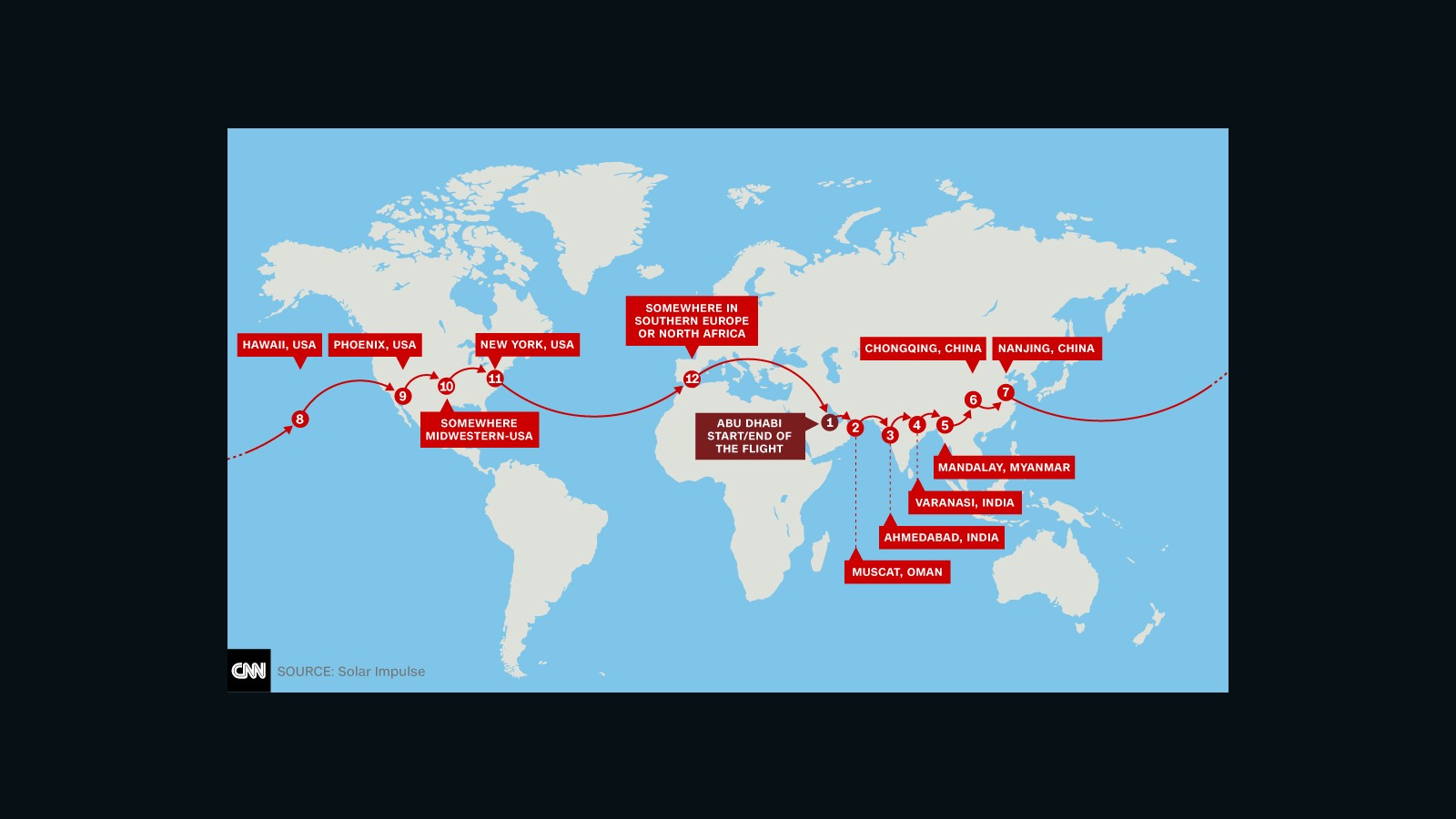CNN)The quest to complete the first solar-powered flight around the world moved a bit closer to reality Tuesday.
Swiss pilots Bertrand Piccard and Andre Borschberg announced the Solar Impulse 2 aircraft will depart the United Arab Emirates on their historic adventure in late February or early March, making a total of 12 planned stops.
The route includes landings in Myanmar; China; India; Phoenix, Arizona; and New York's John F. Kennedy International Airport. At speeds between 50 and 100 kilometers per hour (31-62 mph) Piccard and Borschberg aim to circle the globe flying about 25 days over a total of about five months.
An earlier version of the plane was the first solar-powered aircraft of "perpetual endurance" to fly "day and night without a drop of fuel," according to its website, thanks to advanced solar cells that charge light-weight lithium batteries. The batteries are able to store enough energy to allow the plane to fly long distances at night. Developers say Solar Impulse 2 takes what engineers learned from its predecessor and pushes it a step further.
Compare the aircraft's wingspan to a giant Boeing 747-8: Solar Impulse 2 is 12 feet wider -- at 236 feet. And it's very lightweight, just 2½ tons, lighter than a large SUV.
With just one seat, designers acknowledge Solar Impulse 2 isn't commercially practical. But that's not the point. Instead, engineers aim to demonstrate the possibilities of solar-powered aviation and to promote clean-energy technology.

Solar Impulse 2's route includes Asia and North America.
Soon, the plane's unique silhouette may be visible across the horizons of Southern Europe, Africa, Asia and North America. Cities on the planned route include the Chinese communities of Chongqing and Nanjing, as well as Ahmedabad and Varanasi in India.
The pilots have already set a few solar aviation records. In 2010, with Borschberg in the cockpit, a previous Solar Impulse became the first manned plane to fly for 24 hours on nothing but solar-powered batteries. The team followed that up in 2012, when the plane flew from Spain to Morocco, making it the first manned sun-powered plane to fly to another continent.
And in 2013, Piccard and Borschberg flew an earlier version of Solar Impulse on a mission across the United States.
Piccard is a bona fide adventurer -- with world records to prove it. Decades after pioneering ultralight aircraft in the 1970s, Piccard and his colleague Brian Jones were the first to circle the earth nonstop in a balloon in 1999. Their gondola is displayed at the Smithsonian.
Where does pilot go to the bathroom?
Where does pilot go to the bathroom? 02:25
Breaking barriers is a Piccard family tradition. His grandfather explored the stratosphere in a pressurized chamber carried by a balloon. Ten miles high, he was the first human to see the curvature of the planet with his own eyes.
Piccard's father plumbed the Pacific, taking a special submarine to a record-setting depth of nearly 7 miles.
Borschberg came to the project with more than two decades as a Swiss Air Force fighter pilot.




Ingen kommentarer:
Legg inn en kommentar
Merk: Bare medlemmer av denne bloggen kan legge inn en kommentar.